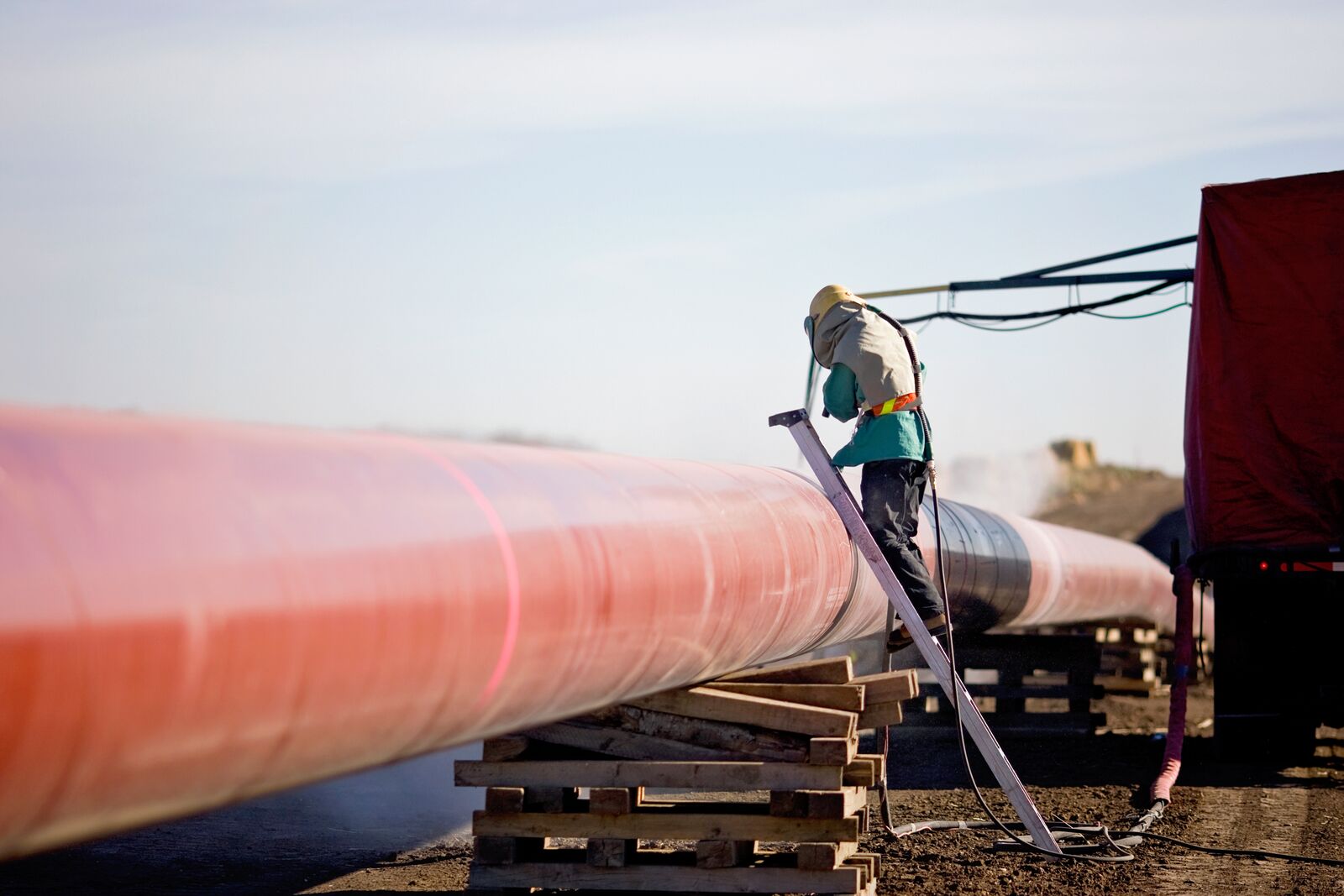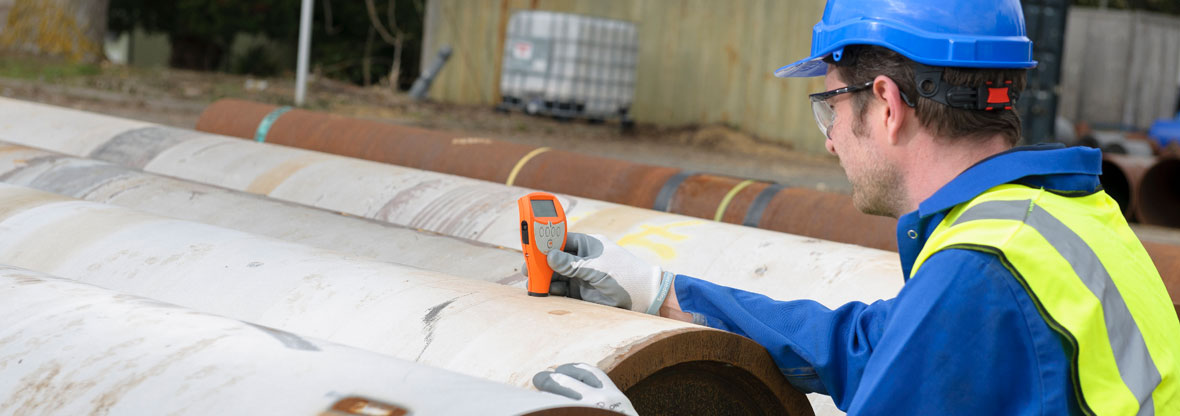Pipeline Welding Inspection: Guaranteeing Compliance with Sector Specifications
Pipeline Welding Inspection: Guaranteeing Compliance with Sector Specifications
Blog Article
Comprehensive Overview to Pipeline Welding Evaluation: Ensuring Integrity and Safety in Pipe Building And Construction and Upkeep
The honesty and security of pipelines are paramount in today's infrastructure landscape, highlighting the vital role of welding evaluation in pipe construction and maintenance. A thorough overview on this subject not just highlights the requirement of analyzing weld quality but also addresses the numerous assessment techniques available, such as radiographic and ultrasonic testing. By recognizing common issues and their implications, stakeholders can execute finest techniques that make certain conformity and long life. However, the complexities associated with welding evaluation raising important inquiries concerning market criteria and the evolving modern technologies that may redefine these techniques.

Importance of Welding Evaluation
Welding evaluation plays an essential role in making certain the integrity and safety of pipe systems. It functions as a basic procedure that verifies the quality and integrity of bonded joints, which are frequently one of the most weak spots in pipeline building and construction. Through systematic assessment, assessors can determine prospective flaws such as cracks, porosity, and incomplete blend, which may endanger the architectural honesty of the pipe.
The value of welding examination extends past simple compliance with industry standards; it also safeguards public health and wellness and the atmosphere. Pipes carrying dangerous materials pose significant dangers if failings take place. Efficient inspection methods assist prevent tears and leakages, minimizing ecological damages and safeguarding neighborhoods. In addition, detailed assessments can boost the long life of pipeline systems, minimizing the demand for pricey fixings and downtime.
In enhancement to making certain security and compliance, welding examination fosters a culture of quality control within organizations. By prioritizing evaluation throughout the welding process, companies can develop a credibility for reliability and excellence, eventually bring about raised customer confidence and service possibilities (Pipeline Welding Inspection). Therefore, the value of welding inspection can not be overstated in the context of pipe building and construction and maintenance
Trick Welding Processes
Different welding processes are utilized in pipeline building, each with its own advantages and applications. Among one of the most commonly used approaches are Shielded Metal Arc Welding (SMAW), Gas Tungsten Arc Welding (GTAW), and Gas Metal Arc Welding (GMAW) SMAW is preferred for its versatility and capability to carry out well in different environmental problems, making it suitable for field applications.
GTAW, often described as Tungsten Inert Gas (TIG) welding, is acknowledged for its capability to produce high-grade welds with excellent control over warmth input, making it excellent for thin-walled pipes and stainless-steel materials. GMAW, or Metal Inert Gas (MIG) welding, provides high deposition prices and is reliable for large tasks, typically employed in the manufacture of pipes in controlled environments.
Additionally, Immersed Arc Welding (SAW) is utilized for its deep infiltration and high productivity, especially in the building and construction of large-diameter pipes. Each of these procedures contributes to the general honesty and safety and security of pipeline constructions, making it possible for welders to choose the most proper method based on product type, job needs, and ecological conditions. Recognizing these key welding processes is vital for reliable pipeline welding examination.
Typical Issues and Their Effect

Porosity, identified by small gas pockets trapped within the weld, compromises the material and can bring about leakages. Fractures, which may web link happen due to thermal anxieties or incorrect cooling, can result and circulate in structural failure under pressure. Undercutting, where the base metal is deteriorated along the weld bead, reduces the reliable cross-section of the pipeline, boosting the danger of fracture.
Insufficient fusion happens when the weld metal does not correctly bond with the base metal, causing weak areas that might fail under stress and anxiety. Slag addition, the entrapment of non-metallic material within the weld, can also weaken the joint's integrity. Determining and addressing these problems early in the construction process is critical to guaranteeing the long-term dependability and safety of pipe systems, thus safeguarding both the infrastructure and the setting.
Assessment Tools and techniques

Aesthetic inspection is the very first line of protection, enabling examiners to identify surface area irregularities, imbalance, or other noticeable defects. Ultrasonic testing employs high-frequency audio waves to discover interior flaws, providing exact deepness dimensions and identifying defects without damaging the weld. Radiographic screening makes use of X-rays or gamma rays to generate photos of the weld, allowing the identification of inner gaps, fractures, or additions.
Magnetic bit testing is specifically efficient for finding surface he has a good point area and near-surface gaps in ferromagnetic materials. This method involves applying an electromagnetic field and great iron fragments to the weld, disclosing flaws through the buildup of bits at defect sites.
In enhancement to these strategies, specialized devices such as automated ultrasonic testing tools and digital radiography systems enhance examination precision and effectiveness, guaranteeing an extensive evaluation of pipe welds during construction and maintenance.
Ideal Practices for Compliance
Sticking to finest methods for conformity in pipeline welding inspection is essential for ensuring the stability and safety and security of the facilities. Organizations needs to establish a thorough quality management system that lines up with industry requirements such as ASME, API, and AWS. This consists of developing in-depth welding procedures that define the products, techniques, and credentials required for welders.
Normal training and accreditation of inspection workers are essential to maintain high expertise levels. Examiners need to be familiar with various non-destructive testing (NDT) methods, consisting of ultrasonic testing, radiographic screening, and visual assessment, to properly identify potential problems.
Paperwork plays an important function in compliance; keeping accurate records of inspections, weld treatments, and personnel certifications assists to guarantee traceability and liability. Scheduled audits and evaluations of welding methods ought to be carried out to determine locations for improvement and make certain adherence to established methods.

Verdict
In final thought, the execution of strenuous welding assessment methods is extremely important for ensuring the integrity and safety of pipe building and upkeep. By recognizing problems and utilizing advanced examination methods, organizations can dramatically enhance the top quality of bonded joints. Following finest practices promotes compliance with industry criteria, eventually guarding public health and stopping environmental dangers. Continual renovation in examination procedures will add to the longevity and dependability of pipeline systems, highlighting the vital function of welding evaluation in the market.
The stability and safety and security of pipes are vital in today's infrastructure landscape, highlighting the critical function of welding inspection in pipeline building and upkeep. Comprehending these crucial welding procedures is essential for effective pipeline welding inspection.
Sticking to best techniques for conformity in pipe welding evaluation is vital for making sure the integrity and safety and security of the facilities.In final thought, the execution of rigorous welding assessment methods is critical for ensuring the stability and safety of pipeline building and construction and maintenance. Continuous enhancement in assessment processes will certainly add to the durability and integrity of pipe systems, emphasizing the essential duty of welding examination in the industry.
Report this page